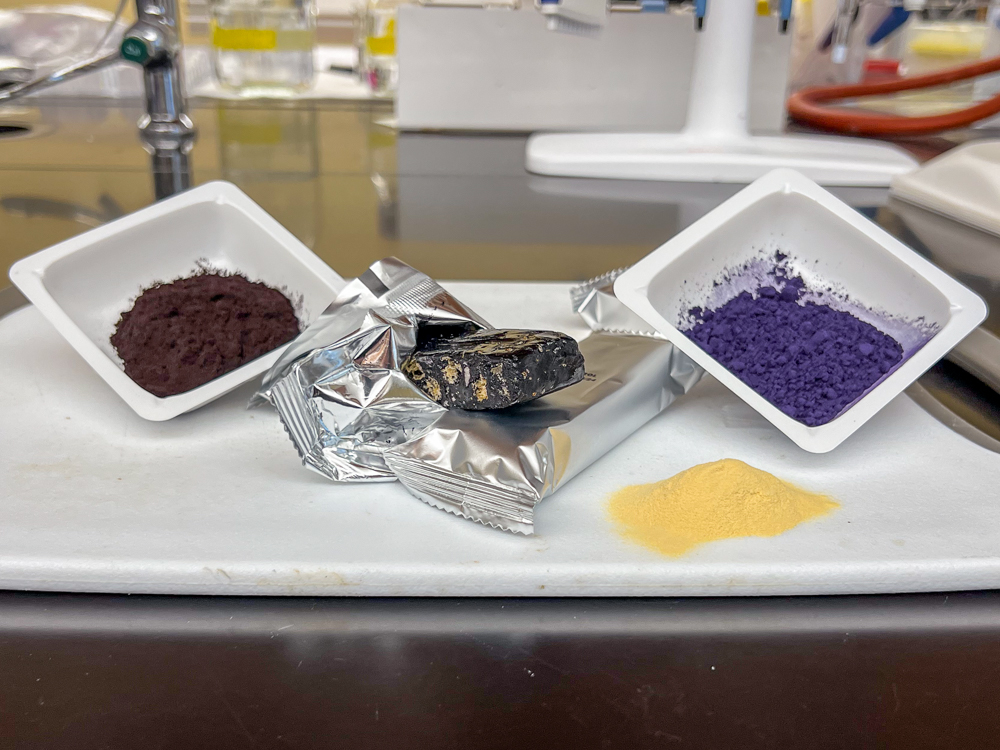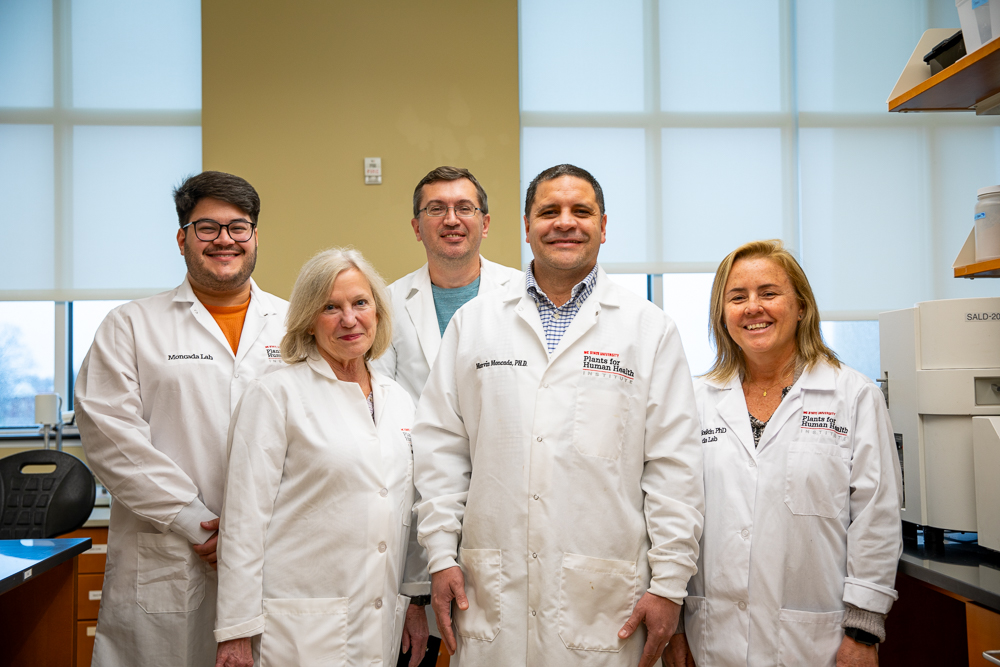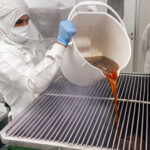Exploring Pulse Protein Potential

Mary Ann Lila and Marvin Moncada, food scientists at NC State University’s Plants for Human Health Institute, have their “finger on the pulse” of the rapidly expanding protein bar sector of the food industry. With support from the USDA Pulse Crop Health Initiative, they’re refining the use of a pulse crop as the protein base of a grab-and-go nutrition bar. While that alone is innovative, they are taking it a step further using a complexed protein-polyphenol ingredient that improves the pulse protein characteristics and bioactive phytochemicals from the polyphenol source, in this case, blackcurrant.

What are pulses?
Dried beans, like black beans, pintos or kidney beans, have long been a staple plant-based protein source. These familiar foods are part of a less familiar plant classification: Pulses. Pulse crops are dried, edible seeds of grain legumes. In addition to those familiar beans, pulses include lentils, dry peas and chickpeas.
As a food source, pulses are a nutrient-dense choice, delivering many valuable health benefits, such as high protein, high fiber and low fat. Pulses also have fewer allergenicity concerns compared to whey, soy, and nuts that are common protein sources for nutrition bars. As an agronomic crop, pulses are more environmentally sustainable as they can fix and use atmospheric nitrogen, requiring less synthetic fertilizers.
“Pulses are a very interesting alternative protein source,” says Moncada. “They are attracting a lot of attention as a food ingredient, especially for protein concentrates and isolates, and for meat substitutes. They are a promising crop from the perspective of nutrition, environmental sustainability, and cost.”
Formulating for flavor and function
Many years ago, Lila developed and patented a process of binding concentrated polyphenol extract from fruit to protein powder creating a functional food ingredient. She and her lab have experimented with various proteins and various fruit sources. For this project, the Moncada Lab finessed the recipe over the course of three months evaluating protein sources including whey, chickpea and pea protein, and fruit sources including blueberry pomace, elderberry, muscadine grape and blackcurrant. Use of the pulse protein alone resulted in a crumbly texture that was not suitable for processing and beany and grassy flavors; however, when complexed with the polyphenol, the texture and flavor were dramatically improved. The bars include other familiar nutrition bar ingredients, such as chia seeds, sunflower kernels, honey and puffed quinoa.
Concentrated polyphenol extracts from fruits often have the unpleasant effect of staining lips, teeth and tongue when consumed in original form. However, when complexed with the pulse protein, the staining effect is nearly eliminated. The target polyphenol concentration in the final, 160-calorie bar formulation was five percent. This concentration offers a health-relevant dose of bioactive polyphenols. Shelf-life simulation studies conducted in the lab showed no degradation of bioactivity for up to one year.








International Partnerships
Once the bar formulation was finalized, the team was ready to scale up. The last component of the grant project is a human clinical trial to evaluate the bars to see if they have the potential to reduce cholesterol. Moncada worked with Nutreo, in Rio Negro, Colombia, an FDA-approved facility, to execute the production of 5,000 individually packaged bars. They also assisted with ingredient preparation by spray drying the pulse protein-blackcurrant ingredient using their commercial equipment. Through a coordinated effort among the Moncada Lab, the Lila Lab and the Nutreo staff, the bar production run for each treatment was complete in day’s time.
Moncada was pleased with the outcome of the project—the nutrition bar development and production as well as the relationship built with Nutreo. He boasts, “This fruitful collaboration with Nutreo has included internship opportunities for our graduate students, scale-up experiments for this Pulse project and, in the near future, applying for joint industry-focused grants.” Moncada adds, “We look forward to assisting them with facility design and equipment selection as they begin an expansion project to bring their processing capabilities from Rio Negro, Colombia to Durham, NC.”
This project, “Pulse-fruit aggregate ingredients with enhanced taste, functionality and health attributes for diversified food applications” (3060-21650-002-026-S) was funded by USDA ARS FY2021 Pulse Crop Health Initiative
- Categories: